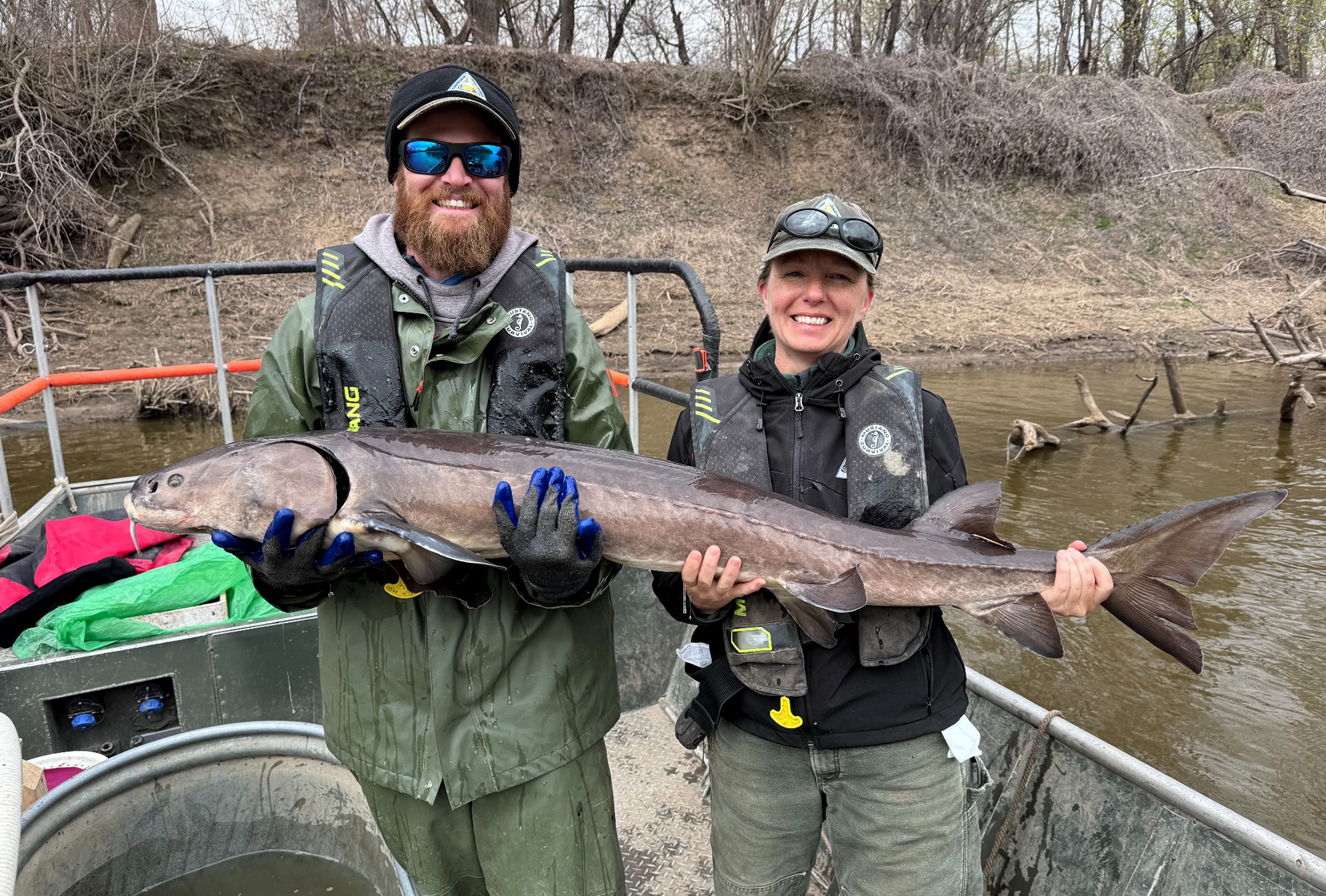A lake sturgeon that was tagged in a Wisconsin river years ago has traveled so far down the Mississippi River that it’s taken biologists from two different states to track it. In a Facebook post on Monday, the Wisconsin Department of Natural Resources announced that the fish was captured at the Lock 26 Dam near Alton, Illinois. Biologists with the Missouri Department of Conservation caught the fish during a survey on the Mississippi, which forms the state line between Missouri and Illinois. The WDNR says the sturgeon’s downriver journey is one of the farthest ever recorded for that population of sturgeon, and especially notable given how many dams and locks it navigated.
“Our biologists confirmed that this sturgeon was initially tagged on the Chippewa River and swam at least 651 miles from Jim Falls,” the WDNR wrote in the post. “That impressive journey is the longest-known distance a Chippewa River lake sturgeon has ever traveled!”
The two agencies were able to gauge this distance because the sturgeon had been fitted with a floy tag at some point. These visible nylon tags are typically anchored to a fish’s dorsal fin, and they have numbered codes that are unique to a particular fish, allowing researchers to track its movement and growth over time.
“This fish was tagged at least a decade ago,” the WDNR explained in response to one of the comments on the post. “Perhaps as long as 25 years ago, based on the color of the floy tag.”
The agency said the fish was returned to the river after MDC biologists collected data and placed another tracking tag on the fish. The sturgeon was a 56.9-inch male, and the WDNR estimates that it was around 30 years old.
Lake sturgeon are native to the Mississippi River Basin, and they’re one of the largest and longest-living freshwater species in North America, reaching weights of 200 to 300 pounds and occasionally surpassing 100 years of age. They’re also an ancient fish species that’s been around for at least 150 million years. Similar to salmon, they migrate to spawn in the same rivers where they were born.
Read Next: How Far Can Ducks Migrate in a Day? About 2,000 Miles
Sturgeon migrations take place during the spring, and historically, these fish would swim hundreds or even thousands of miles, traveling up tributaries of the Mississippi to reach their spawning grounds. This all changed when we dammed and diked the river to prevent flooding and improve navigation. There are now thousands of dams throughout the Mississippi River Basin, most of which lack fish ladders or other structures allowing for fish passage.
The habitat fragmentation that resulted is part of why lake sturgeon are considered “threatened” or “a species of special concern” in some states throughout their native range. That’s also why the Chippewa River lake sturgeon’s journey is so impressive. In order to swim from Jim Falls, Wisconsin, to Alton, Illinois, the fish would have had to pass through multiple large hydroelectric dams and navigate a complex series of locks designed for boat passage.
“This lake sturgeon passed over three dams on the Chippewa River before making its way to the Mississippi River, where it passed through 22 locks and dams,” the WDNR wrote in a follow-up comment. “Considering this fish was likely too large to fit through the trash racks [debris screens] on the dams on the Chippewa River, it would have had to pass through the spillway gates of the dams during high water events.”
Read the full article here




